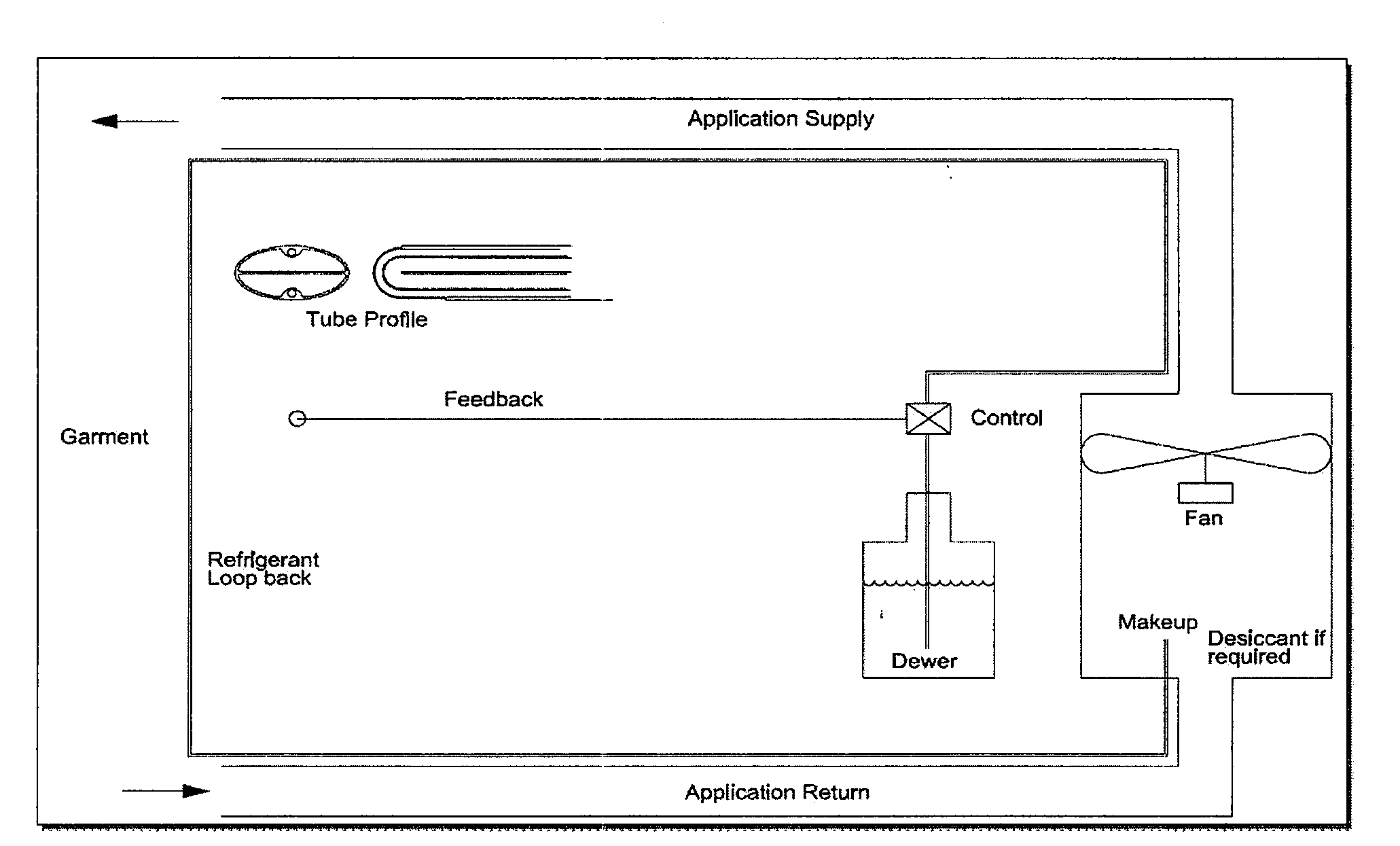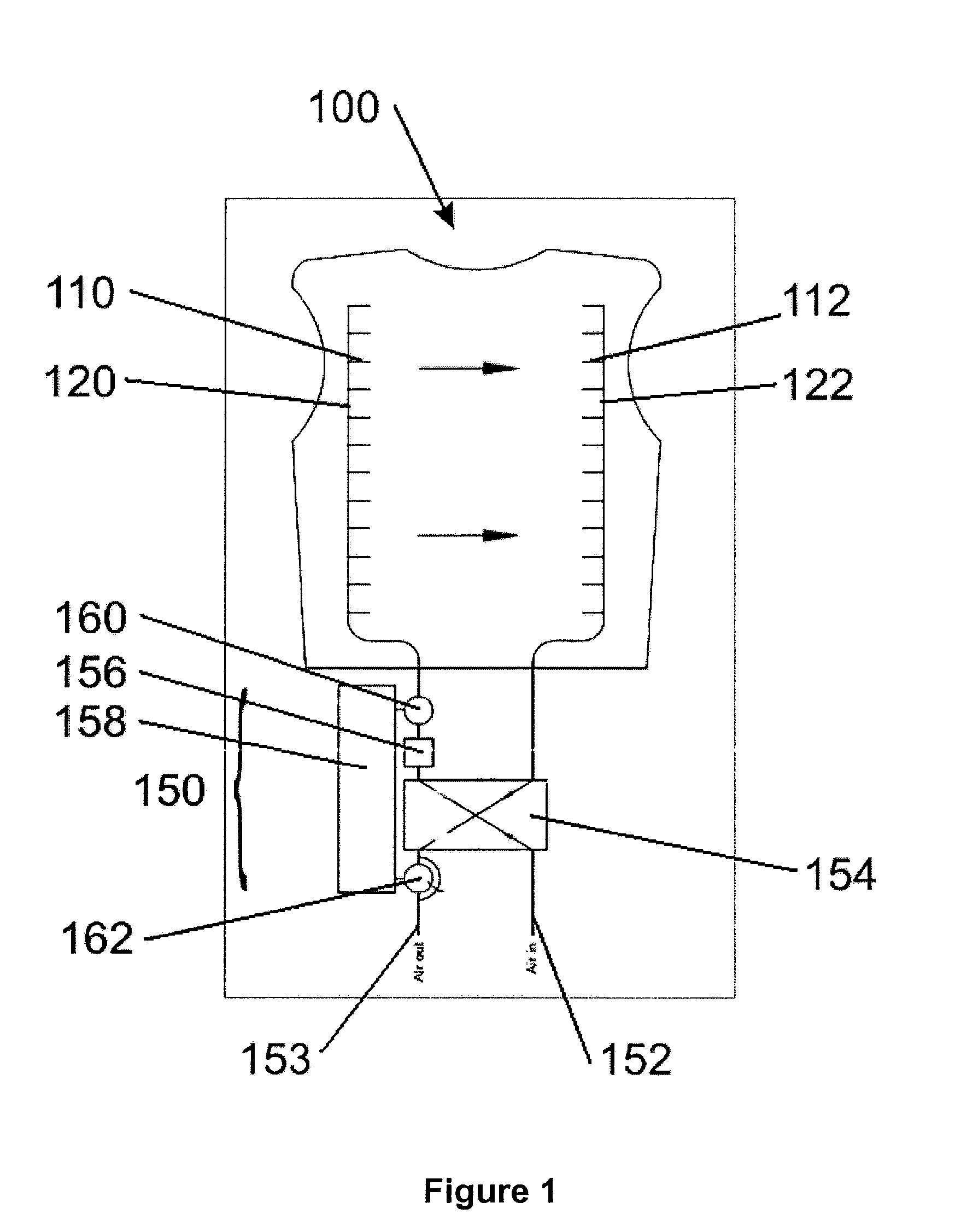Body Temperature Controlling System
a body temperature and control system technology, applied in the field of body temperature control system, can solve the problems of reducing physical and cognitive performance, not being portable for man, and system however not supporting dismount operations
- Summary
- Abstract
- Description
- Claims
- Application Information
AI Technical Summary
Benefits of technology
Problems solved by technology
Method used
Image
Examples
example
[0156]The embodiments of FIGS. 19 to 22 are used.
[0157]A total of 74 supply micro-tubes with an average length of 3″ were installed on conduits 1920, 1922 and 1938. The tubes had a nominal diameter of 0.144″ and a wall thickness of 0.007″. An equal number of 0.125″ extractor ports were installed between the supply conduit directly on the coaxial, counter flow duct. Twenty additional 0.125″ supply ports were installed under the supply and extractor conduits to provide airflow between the duct and the wearer.
[0158]A total of seven Vaisala HPM-50, combination temperature and humidity sensors were installed in the system test points as shown in FIG. 35. In addition, a Hall Effect current detector was installed to measure TED power demand. Volumetric flow rates of the complete system including the garment were measured using an anemometer at the garment supply and extraction connection points. Static pressures were also measured at these locations.
[0159]The duct and outer garment were pl...
PUM
 Login to View More
Login to View More Abstract
Description
Claims
Application Information
 Login to View More
Login to View More - R&D
- Intellectual Property
- Life Sciences
- Materials
- Tech Scout
- Unparalleled Data Quality
- Higher Quality Content
- 60% Fewer Hallucinations
Browse by: Latest US Patents, China's latest patents, Technical Efficacy Thesaurus, Application Domain, Technology Topic, Popular Technical Reports.
© 2025 PatSnap. All rights reserved.Legal|Privacy policy|Modern Slavery Act Transparency Statement|Sitemap|About US| Contact US: help@patsnap.com



